Best laptop for graphic design 2022: Get creative | ZDNet
Apple’s professional users — especially those working in the creative industries — have welcomed the company’s renewed focus on its professional Mac products, following the long-awaited introduction of the 2019 Mac Pro desktop, and the 16-inch revamp of its flagship MacBook Pro laptop. But there’s no doubt that Apple took its eye off the ball in the Mac market while it spent years concentrating on the iPhone, and that has given rival PC manufacturers a real opportunity to capture a slice of Apple’s creative pie.
Intel got the ball rolling back in 2018 with its Creator PC initiative, which was further boosted by Nvdia’s Studio campaign the following year, which aimed to extend the company’s graphics technologies beyond its traditional gaming audience and into the creative industries.
As a result, all the main PC manufacturers, including market leaders such as Dell, HP and Lenovo, now offer extensive portfolios of laptops and desktop PCs that are specifically aimed at creative users in fields such as graphic design, photography, video editing and animation. The involvement of Nvidia, with its RTX ray-tracing graphics technology has also attracted gaming specialists such as Razer and Gigabyte, whose expertise with high-end gaming graphics has allowed them to design some impressively powerful laptops for professional users.
So creative users are now spoilt for choice, with dozens of laptop and desktop systems now vying for their attention. Here, we’re focusing on ‘creator’ laptops. Check out our companion list of the best desktops for this use case.
Apple MacBook Pro 13-inch (Late 2020)
Best overall
CPU: apple M1 | GPU: M1 integrated graphics | RAM: 8GB | Storage: Up to 512GB SSD | Display: 13-inch Retina
Externally, the 13-inch MacBook Pro launched in November 2020 didn’t differ much from previous generations. But on the inside, it was an entirely new beast. The first ‘pro’ Mac based on the Apple Silicon M1 system-on-chip delivered impressive performance — including, crucially for creators, GPU performance — and battery life, with ZDNet’s Jason Cipriani claiming it was “the fastest Mac I’ve ever used”.
But while Apple’s Rosetta 2 technology provided compatibility with existing software and apps, which were written for Intel processors, developers still needed to update their software in order to gain the full performance benefits of Apple’s new processors.
Since then, Microsoft has announced native M1 support for Office 365, and Adobe has just released the M1 version of Photoshop, which it claims provides 50% performance increase over the MacBook Pro’s Intel-based predecessor. Support from these key developers should boost acceptance of the new Apple Silicon Macs, and the rumours of Apple’s next-generation M1X chip have Mac users eagerly awaiting the next updates for the MacBook Pro and iMac ranges.
Pros:
- Excellent display
- Great CPU performance
- Great battery life
Cons:
- Expensive
- Some programs may not be compatible with macOS
HP ZBook Fury 17 G8
Customisable large-screen laptop with plenty of CPU and GPU options
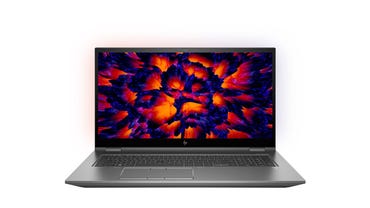
CPU: Up to 11th gen Intel Core i9 | GPU: Up to Nvidia RTX A4000 | RAM: Up to 64GB | Storage: Up to 1TB SSD | Display: FHD or 4K
The ZBook is HP’s mobile workstation range, but there are several models within the range that are specifically designed for particular tasks and applications. The ZBook Fury – recently updated with this 8th generation (G8) model – is very much a top-of-the-range option, suitable for 3D graphics and visualization, game development and 4K video editing.
HP’s web site provides an almost dazzlingly wide range of customization options, including both 15.6-inch and 17.3-inch displays, but if you’re aiming for no-compromise performance then it makes sense to opt for the 17-inch model that we review here. It’s a bit of a beast, measuring 27mm thick, and near-as-dammit 3Kg in weight, but it packs all the power of a high-end desktop graphics workstation.
There’s an entry-level model with i5 processor, integrated graphics and 1080p display for around $2300, but serious graphics and video work will require a few upgrades. You can expect to step up to $4164.00 for a more powerful model with an 11th gen i7-11800H, nVidia RTX A2000, full 4K display, 16GB memory and 256GB solid-state storage. And, as mentioned, there’s a wide range of further upgrades also available, including i9 and Xeon processors, and up to RTX A5000 graphics. The high-quality display doesn’t cut any corners either, providing HDR400, 120Hz refresh rate for clear, sharp graphics for game developers, and DCI-P3 colour for video-editing.
Pros:
- 4K display option
- Tons of customization options
- Workstation performance
- Good connectivity
Cons:
- Expensive
- Only 720p webcam
Dell Precision 5760
Great mid-range workstation

CPU: Intel Core i7-11850H | GPU: Nvidia RTX A2000 | RAM: 16GB | Storage: 256GB SSD | Display: 17-inch 3840×2400
Dell made quite an impact with its 17-inch Precision 5750 last year, combining impressive workstation levels of performance with a slim and (relatively) lightweight design that could go head-to-head with Apple’s revamped 16-inch MacBook Pro. As you might expect, the new Precision 5760 is this year’s follow-up, bringing new CPU and GPU upgrades, whilst still retaining the slimline profile of its predecessor – just 13.2mm thick – and a starting weight (depending on configuration) of just 2.2kg.
There are three standard configurations on Dell’s web site, although all three provide a wide range of customization options, so you can effectively build your own laptop to suit your needs. The entry-level model only costs around $2000, but relies on an i5 processor with integrated graphics and relatively modest 1080p display. Creative users will therefore probably prefer the i7 model, which steps up to an 11th gen, 8-core i7 processor, nVidia RTX A2000 graphics, 16GB memory and 256GB solid-state drive. That costs $3085.75 with UHD touch-screen display with 3840×2400 resolution (266.4dpi), which supports HDR400, Adobe RGB and 99% of the DCI-P3 colour standard for professional-level video editing work. There are also additional options for memory and storage upgrades, as well as a choice of i9 and Xeon processors, and RTX A300 graphics.
If you want to read a more in-depth analysis of the Dell Precision 5760, you can check out our full review.
Pros:
- Slimline, lightweight design
- Good connectivity
- Lots of customization
- Great 17-inch display
Cons:
- No audio line-in
- Heavy power supply
- Upgrades add weight
Gigabyte Aero 15 OLED
Best display for graphic design
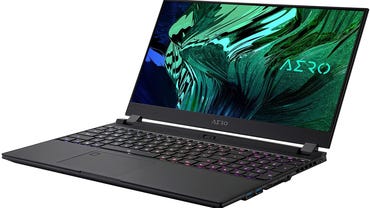
CPU: INtel Core i7-11800H | GPU: Nvidia GeForce RTX 3070 | RAM: 16GB | Storage: 1TB SSD | Display: 15.6-inch 4K OLED
Gigabyte is best known for its Aorus range of gaming laptops and components, but its Aero range also provides some attractive options for professional content creators too. The company recently updated the popular Aero 15 OLED, which, as the name implies, provides a high-quality 15.6-inch OLED display that is suitable for a wide range of creative and design tasks. It’s not the lightest laptop of this size, weighing 2.3Kg, but it certainly packs plenty of power for high-end graphics and video work.
It has to be said, though, that Gigabyte’s web site is less than helpful. It lists a wide range of options for the CPU, GPU and other components, but you can’t buy directly from Gigabyte so you’ll need to search around online to find the configuration that you require.
It’s worth shopping around, though, as the Aero is competitively priced, with the most commonly available configuration costing $1599.00 with an 1th generation i7-11800H processor, nVidia GeForce RTX 3070 Laptop GPU, 16GB memory and 1TB solid-state drive. That combination will provide plenty of power for professional users, but Aero’s crowning glory is the Samsung OLED display, which provides 4K resolution, with support for HDR400 and the DCI-P3 colour standard for professional video-editing. It’s well connected too, with one Thunderbolt 4 port, three USB-A (3.2), HDMI and mini-DisplayPort for connecting external displays, a combo 3.5mm audio input/output, SD card reader and Ethernet port.
Pros:
- 4K OLED display
- Powerful GPU
- Good connectivity
- Competitive price
Cons:
- Limited upgrade options
- On the heavy side
HP ZBook Power G8
High-end performance with a price to match
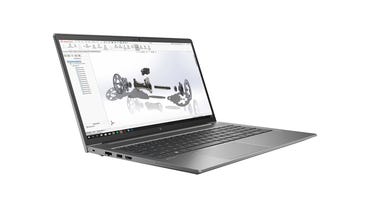
CPU: Intel Core i5-11400H | GPU: Integrated Intel UHD Graphics | RAM: 16GB | Storage: 512GB SSD | Display: 15.6-inch 4K
The ZBook Fury is HP’s top-of-the-range laptop for 3D graphics and 4K video, but if your needs are a little more modest then the ZBook Power G8 provides a good alternative with a lightweight design and performance that is aimed at 2D graphics, as well as simple 3D and video-editing work.
Measuring 22.8mm thick, the 15.6-inch Power G8 weighs a modest 1.9Kg, so it’s light enough to carry around in a bag or backpack. The Power G8 is designed for both professional and educational use, with a sturdy aluminium casing that meets the MIL-STD standard for durability, so it’s a good option for outdoor use. It even includes a built-in Tile locator tag to help you find it in case of loss or theft. HP also says that the screen can withstand being wiped 1000 times with household anti-bacterial wipes.
Prices start at $1766.10 for a model with a 6-core Intel i5 processor, 16GB memory and 512GB storage. That model relies on integrated graphics, and only offers a display with 1080p resolution, but that should still be perfectly adequate for 2D graphics and design work, and 1080p video-editing. You can upgrade to a 4K display for $298, and if you need a little more power then HP offers a ‘build your own’ option that allows you to select i7 or i9 processors along with a variety of discrete Nvidia GPU options.
Pros:
- Sturdy, lightweight design
- Lots of customization options
- Built-in Tile tracking
Cons:
- Only 720p webcam
- Lower-end models only have integrated graphics
Lenovo ThinkPad P15 Gen 2
Great for students
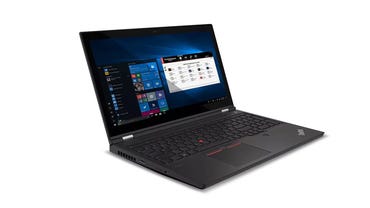
CPU: Intel Core i5-11500H | GPU: Nvidia T1200 | RAM: 16GB | Storage: 512GB SSD | Display: 15.6-inch 1080p
Lenovo’s updated ThinkPad P15 Gen 2 isn’t as light as previous models in the range, but it provides an affordable mobile workstation for students and professional users in fields such as engineering and CAD.
The p15 Gen 2 measures 31mm at its thickest point, and weights in at 2.87kg, so it’s probably more suited for indoor use on the desktop rather than outdoors. However, the low price and Lenovo’s wide range of customization options will still appeal to many users. There’s a dozen “ready to ship” models available on Lenovo’s website, with prices starting at $1709 with a 6-core, 11th generation Intel Core i5 processor, Nvidia T1200 GPU, 16GB of RAM, and a 512GB SSD. That price includes a 15.6-inch display with 1080p resolution, which should be adequate for 2D graphics and simple video editing. But you can upgrade to a 4K display for a little over $300 if you need it. Lenovo also provides a “Build your own ThinkPad” option which allows you to start with a clean slate and select all the core components yourself, including: Intel Core i7, i9, and Xeon processors and a variety of Nvidia graphics cards. There is also a high-end display option, which will set you back another $500 or so, which supports Dolby Vision and HDR500 and sports a 17-inch screen.
Pros:
- Competitive price
- Wide range of customization options
- Good connectivity
Cons:
- Heavy
- Entry-level model only has 1080p display
Microsoft Surface Laptop Studio
Best choice for mobile professionals
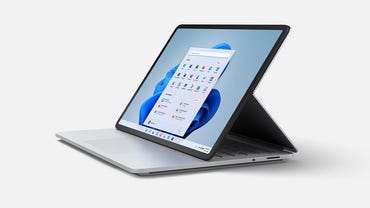
CPU: Intel core i7-11370H | GPU: Nvidia GeForce RTX 3050 Ti | RAM: 32GB | Storage: 1TB SSD | Display: 14.4-inch 1600p
The Surface Book was Microsoft’s first attempt to lure creative users away from Apple, but the new Surface Laptop Studio for Business goes all-out to focus on graphics and design work.
Like other Surface models, the Laptop Studio has a convertible, 2-in-1 design that allows you to fold the screen flat so that you can use it either as a tablet or a conventional laptop. However, the screen also has an additional hinge that lets you tilt the screen like an easel; this is perfect for use with Microsoft’s Surface pen for illustration work.
The built quality is excellent, and the Laptop Studio feels very sturdy, despite its lightweight design and slimline profile. The 14.4-inch, touch-sensitive display is bright and sharp with 1600p resolution, and it is a delight to work with. However, Microsoft makes no mention of Adobe RGB or DCI-PE support, so you’ll probably still need an external display for high-end graphics or video work. And, to be fair, the Laptop Studio isn’t meant to act as a mobile workstation in the same league as some of its rivals, focusing on portability and ease of use rather than high-end performance.
Prices start at $1700 for a model with an i5 processor and integrated Iris graphics. However, you’ll need to double that price for the top-of-the-range model that we tested which costs $3399.99. Our testing model was outfitted with an 11th gen i7 CPU, Nvidia GeForce RTX 3050 TI graphics card, 32GB of RAM, and 1TB SSD. Connectivity is a little disappointing, though, with just two Thunderbolt 4 ports and a headphone socket. So Microsoft is clearly hoping you’ll pay another $260 for the additional ports provided by its Surface Dock 2.
Pros:
- Slim, lightweight design
- Adjustable easel display
- Solid build
- 1600p display
Cons:
- Limited customization options
- Limited connectivity
- Less suited for video editing
MSI Creator Z17
Great Apple alternative
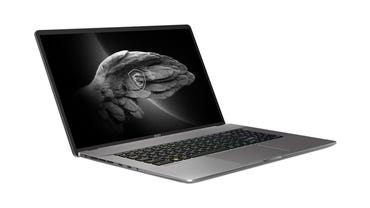
CPU: Intel Core i7-12700H | GPU: Nvidia GeForce RTX 3070 Ti | RAM: 32 GB | Storage: 1TB SSD | Display: 17-inch 1600p
Last year’s Creator 17 model with 10th gen Intel processors is still available on MSI’s web site, and a few online retailers, but if you want to get bang up to date then the new Creator Z17 provides a powerful mobile workstation with a stylish design that MSI describes as “tech meets aesthetics”.
Like Apple’s MacBook range, the Creator Z17 has a ‘unibody’ design carved out of metal. It measures just 19mm thick, and its ‘lunar grey’ colouring is also designed to shimmer and change hue as the ambient light around it changes during the day. However, its 3.0Kg weight reminds you that this is a mobile workstation, rather than a stylish ultrabook.
There’s plenty of power hidden within that stylish design too. Prices for the Creator Z17 start at $3050 for a model with a 14-core, 12th gen i7 processor, Nvidia GeForce RTX 3070 Ti Laptop GPU, 32GB memory and 1TB memory. There are also upgrade options for an i9 processor and RTX 3080 graphics, but it’s a shame that all Z17 models share the same 2560×1600 display. To be fair, it’s an attractive, touch-sensitive display, with 16:10 aspect ratio, smooth 165Hz refresh rate, and support for DCI-P3 for video editing work. It’s a shame, though, that there’s no option to upgrade to a 4K display, so high-end graphics and video work will require an external display.
Pros:
- Attractive, slim design
- Nvidia RTX 30 Series GPU
- High quality display
Cons:
- Heavy
- Limited upgrade options
Razer Blade 15
Best for content creators
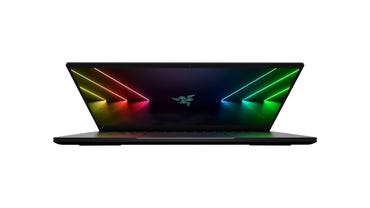
CPU: Intel Core i9-12900H | GPU: Nvidia GeForce RTX 3080 Ti | RAM: 32GB | Storage: 1TB SSD | Display: 15.6-inch 4K
Razer is well-known for its range of gaming gear and its popular Blade gaming laptops, but the recent move towards hybrid and remote working has encouraged it to move into the business and professional market too. Its new Razer Book laptops are an attractive convertible rival for Microsoft’s Surface range, although their integrated graphics are more suited for general office work rather than content creation. However, there are several models in the recently updated Blade range that will appeal to creative users. Screen sizes vary from 14.0-17.0 inches, but the sweet spot for creative users is probably the 15.6-inch Blade 15 (which replaces last year’s Blade 15 Studio Edition).
Described as “the world’ thinnest gaming laptop”, the Blade 15 measures just 17mm thick and weighs a highly portable 2Kg. Prices start at $1799.99 for a model with an i7 processor and 1080p display, while a QHD display (2560×1440) steps up to £2299.99. However, the new top-of-the-range Blade 15 model pulls out all the stops, offering a 4K display with super-smooth 144Hz refresh rate and DCI-P3 support for high-end video editing. That bumps the price up to a hefty $3999.99, but the Blade 15 will earn its keep, powered by the latest 12th gen, 14-core Intel i9 processor and Nvidia GeForce RTX 3080 Ti, along with 32GB memory and 1TB solid-state drive. The only disappointment is that Razer doesn’t provide many customization options, so you simply have to select the handful of pre-configured models listed on its web site.
Pros:
- 4K display
- Slim, lightweight design
- Powerful, 14-core i9 processor
Cons:
- Limited customization options
- Only one Thunderbolt port
How did we choose these graphic design laptops?
A laptop designed for creative users has to provide far more power than a laptop that is designed for general-purpose productivity software, such as Microsoft Office. We therefore focused on laptops that provide a discrete graphics card in order to provide extra power for graphics, design and video-editing work. A high-resolution display is also essential, in order to view your work in detail, and many users will insist on a full 4K display for high-end video-editing. Support for specific colour standards is also essential for some industries – Adobe RGB for print and publishing, or DCI-P3 for video and broadcast.
Which graphic design laptop is right for you?
Creative laptops have to cope with a wide range of tasks. Video-editing or 3D animation will require a lot more power than simple 2D graphics or illustration work, so you should be very clear about your requirements before buying a new laptop or mobile workstation.
Battery life varies enormously too, so you need to decide if you need a high-end laptop that can run at full-speed for just a few hours, or a less powerful laptop that can last through a whole day. And, of course, a laptop with 16-inch or 17-inch display will be a lot bigger and heavier than a 13-inch or 14-inch model, so regular business travellers may prefer to opt for a more compact laptop when they’re on the road, with the option of using a larger, external display when they get back to the office.
|
Product |
Price |
CPU |
GPU |
|
Apple MacBook Pro 13 |
$1299 |
M1 |
M1 |
|
HP ZBook Fury 17 G8 |
$1449 |
Up to i9 |
Up to Nvidia RTX A4000 |
|
Dell Precision 5760 |
$2499 |
Intel Core i7 |
Nvidia RTX A3000 |
|
Gigabyte Aero 15 OLED |
$1709 |
Intel Core i7 |
Nvidia GeForce RTX 3060 |
|
HP ZBook Power G8 |
$1766 |
Intel Core i5 |
Intel UHD |
What about battery life?
Battery life is always important for laptops – but perhaps less so for some of these creative laptops. High-end 3D graphics and video work can drain even the most powerful battery in just a few hours, and many ‘mobile workstations’ are primarily intended to be used as a desktop replacement PC that is mainly used indoors – and close to a power socket.
What about connectivity?
Many laptops sacrifice connectivity in order to reduce their size and weight (Apple and Microsoft, we’re looking at you). However, creative users work with a wide variety of devices and peripherals – perhaps connecting their laptop to multiple external displays, audio equipment, or cameras with memory cards – so good connectivity isn’t just an optional extra.
And, bizarrely, many of these powerful, expensive laptops still seem to think they can get away with a mere 720p webcam, which simply isn’t acceptable in these days of hybrid and remote working.
For all the latest Technology News Click Here
For the latest news and updates, follow us on Google News.
